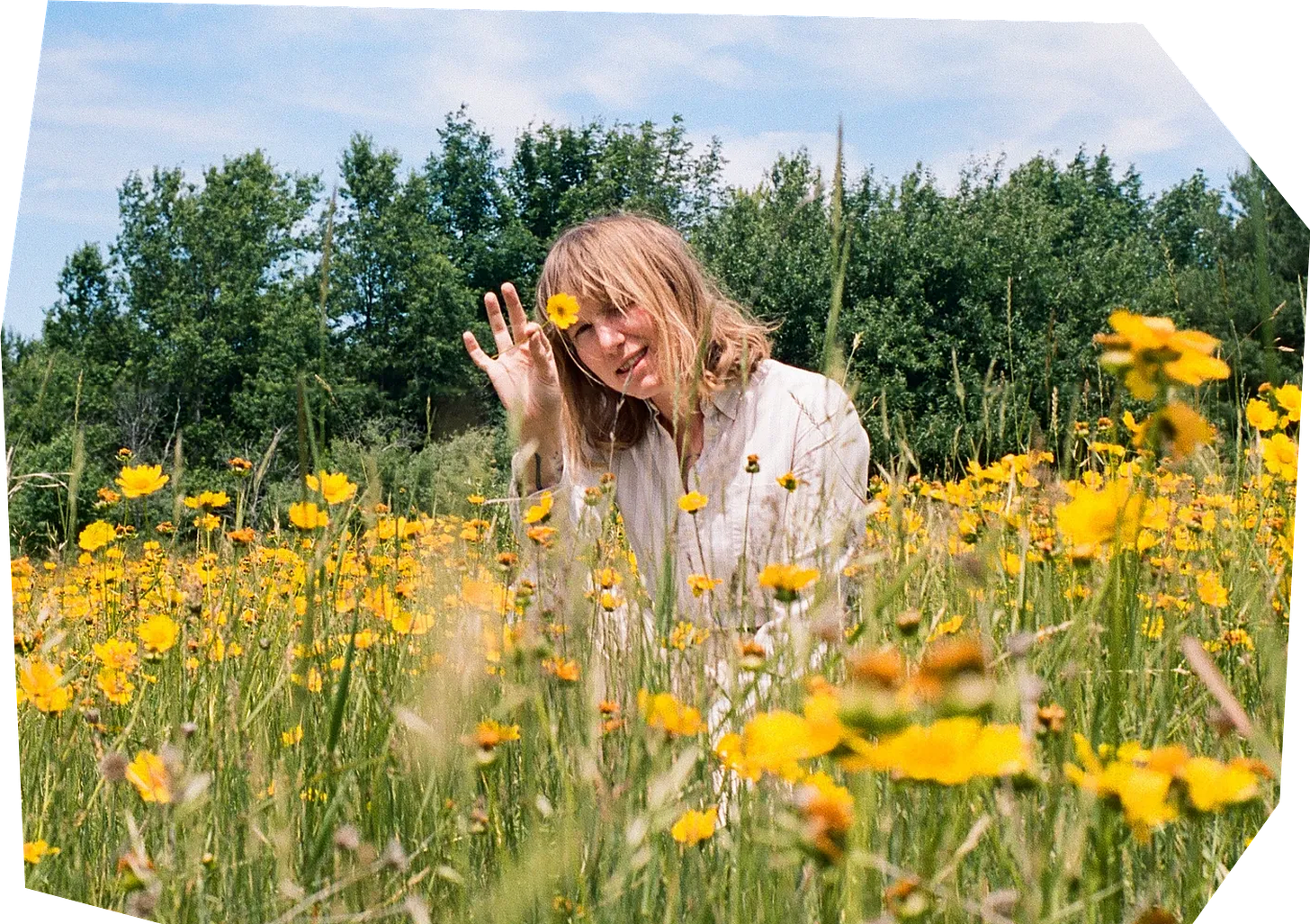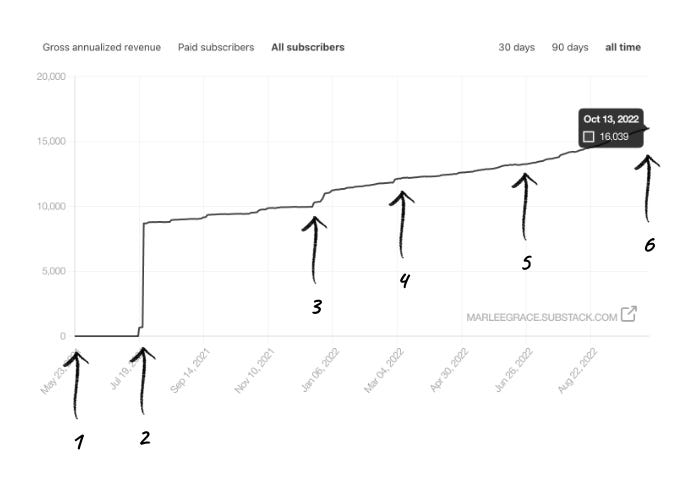The Grow interview series is designed to share the nuts and bolts of how writers have gone independent and grown their audiences on Substack. It has been lightly edited for length and clarity.
We invited
, who writes Monday Monday, to share insights on bringing their audience over from Instagram and creating a steady writing practice. Cody also has a workshop called NEWSLETTER CLASS, which helps others envision, organize, and launch their own Substack newsletter.What’s your Substack about in one sentence?
Monday Monday is about cultivating our creative attention and celebrating the work and art of my friends.
Who reads your Substack?
People who are dedicated to untangling from capitalism and the attention economy through creative efforts and want to laugh along, as I do the same.
What’s your content strategy?
Schedule: New post every Monday. I have been writing weekly on Mondays since 2017 but would go in waves of consistency or use it more for promotional needs. Knowing I will be writing each Monday makes me more excited to research quilt history, more excited to think about dancing and dance. Having a weekly portal to tie all of my ideas together has been profound for me. Substack is like my own little research fellowship, my place to bring my findings.
Format: In the weekly newsletter, I include an image or photograph, an essay on creative or life practice, and 10 links or ideas I am paying attention to. Once a month, I record Yes Yes, my advice podcast—that is also transcribed for readers—where I answer questions from the people.

Substack is like my own little research fellowship, my place to bring my findings.
Growth by the numbers
Started publishing online: I have been using Instagram since 2012, and I started a newsletter on Mailchimp in 2013.
Started Substack with paid subscriptions: July 2021
Free subscribers: 16,230
Paid subscribers: 715 paid and a handful of comps. Anyone who emails me with financial need around a free subscription gets one.
Meaningful growth moments
Before Substack. I had been using Instagram since 2012, when I started my first business, Have Company—a zine and handmade goods shop—from a camper. I started writing a newsletter a year later, had written a few books, and had a Patreon. My mailing list had grown to about 8,000 subscribers before migrating to Substack.
Moving from Patreon to Substack. Professionally, I had a lot of success having readers pay $5-$11 a month on a membership model. I moved from Patreon to Substack with my 400 or so members from Patreon and 8,000 Mailchimp subscribers.
Steady growth. As you can see, my growth doesn’t have any massive jumps, which I think is a testament to the ordinary steady work of writing. I just keep writing. My newsletter comes out on the same day every week, and the podcast comes out once a month.
Read more: When I don’t write
Free preview. A few months in, I sent out a post to paid subscribers and sent a free preview to all subscribers. I got a huge jump in new paid subscribers. I now do this for every paid podcast, and it feels exciting, like a huge win. I also make sure that in the preview section, there is something that even the free subscribers who don’t upgrade will benefit from.
Read more: How to publish a free preview of a paid post
Promoting on Instagram. I started weaving in screenshots of my Substack to my Instagram grid. At this point, almost 70% of my social media is just me leading people to my Substack. I have had to completely unhook from the algorithm because I have never had lower social media engagement. I have 80K+ followers and often get 300 likes on a post. I saw a nice jump at the one-year mark when I shared screenshots of my top posts on Instagram.
Looking ahead. I want to start experimenting more with threads! And send my podcast out twice a month. I am proud of the fact my podcast, YES YES, is completely unedited and me talking into my voice memo app of my phone (yes! You can do that too!). But I would love some intro music and light editing, to polish everything up a bit.
Read more: Audio tools on Substack
A few months in, I sent out a post to paid subscribers and sent a free preview to all subscribers. I got a huge jump in new paid subscribers. I now do this for every paid podcast, and it feels exciting, like a huge win.
Why did you decide to go paid?
For one, this is my job, it is my work, and I think when you have a job you should get paid for it.
I don’t mean to sound overly sassy. I think it is easy to be like, “oh, this little digital newsletter.” And for some people, I think a totally free Substack is a beautiful thing to integrate into your business model. For me, though, I spend hours each week reading articles, paying attention to my surroundings, all to wrap into the format of my weekly newsletter. So going paid was never really a question for me; it is part of how I am paid as a writer.
One other thing that feels important to me is that in my monthly podcast, I get really personal. I experiment with sharing opinions that feel fresh and I wouldn’t put on a free platform. It means so much to me that people are willing and excited to pay $5 a month to listen. I give a lot of myself in that space and feel the safety of the community that surrounds me to be myself, mistakes and all.
What’s the sharpest insight you can offer other writers about growing a Substack publication?
Write when you want to, and write when you don’t want to.
Every Monday morning is when I sit down to write Monday Monday. I do not argue with myself about this. I tend to the field of words, and I write.
What advice have you received about growing your publication that didn’t prove to be helpful?
Adding more things! I found when I was using Patreon, I tried to pack so much into $5 a month that finally I was like, wait, that does not feel like a correct exchange. I find keeping my offering simple and consistent means if I do ever offer more (a bonus podcast a month, integrating threads), it feels like an extra, special thing and not an expectation. I think it can become overwhelming to give so many things instead of just streamline what works.
I find keeping my offering simple and consistent means if I do ever offer more (a bonus podcast a month, integrating threads), it feels like an extra, special thing and not an expectation.
How has your relationship with readers been similar to or different from your relationship to followers on other social media platforms?
I have never been happier, made more money, or felt better about my writing than when I moved to Substack and started treating my social media account as a way to bring people here. So anyone frustrated with your social media engagement—remember, it’s a dopamine loop!
What matters to me is the work. My writing keeps getting better, people leave the Instagram app to come to Substack, I am making deeper connections and friendships with other writers—what a blessing!
Who’s another Substack writer you turn to for guidance and inspiration?
I’d love to shout out Holly Whitaker and Samantha Irby, whose Substacks are very different and very amazing.
Both are amazing friends and cheerleaders to me, have made my writing better, and both use their Substacks in creative and new ways. Oh, and they both write very good books and are extremely hot and cool.
Takeaways
Use social media to get off social media. About 70% of Cody’s social media is promoting their Substack, which is valuable when you have a sizable Instagram following you want to bring to Substack. With Monday Monday, Cody is able to explore nuance and form deeper connections than on Instagram.
Keep your paid offering simple and consistent. It can be tempting to add lots of paid perks for monthly and annual subscribers. Keeping your offering simple can help take some pressure off. And when you have extra energy for paid perks, it’s a bonus that delights subscribers.
Use the free preview. Free previews allow you to share a portion of a paid post with free readers. This is a powerful built-in marketing tool that requires no extra work. Cody is strategic and is sure to include something of value to free readers above the paywall.
What questions do you have for Cody that we didn’t ask? Leave them in the comments!
To read more from this series on growing your publication, see our interviews with Gergely Orosz, Anne Kadet, Category Pirates, BowTiedBull, Justin Gage, Noah Smith, Carissa Potter, Jørgen Veisdal, Anne Byrn, Nishant Jain, Michael Fritzell, Glenn Loury, Erik Hoel, Jessica DeFino, Mike Sowden, Elizabeth Held, Jonathan Nunn, Polina Pompliano, Michael Williams, Judd Legum, and Caroline Chambers.
Editor note: January 29, 2024 the interviewee’s name was updated.















Share this post